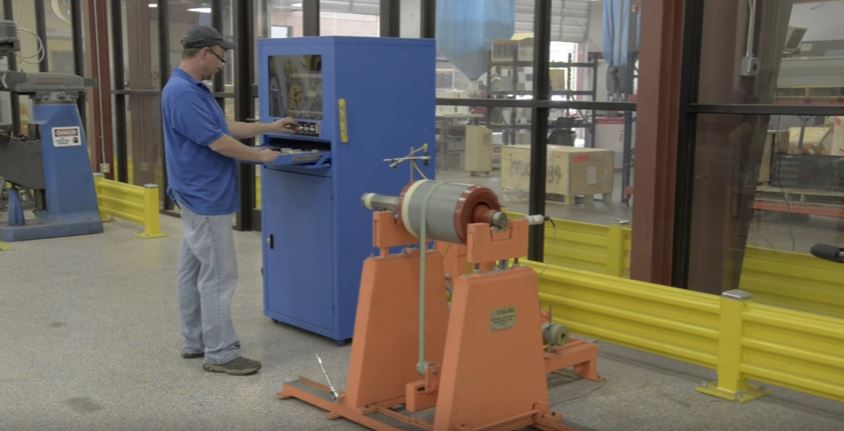Dynamic balancing helps to reduce out-of-balance forces that can cause vibrations in rotating machinery, leading to bearing failure, overheating, and more. The rotor is the moving component of an electromagnetic system in an electromagnetic motor. Its rotation is due to the interaction between the windings and the magnetic fields which produces a torque about the rotor’s axis. Imbalance tends to occur because of magnetic stresses such as vibration, electrical noise, and circulating currents. Overheating or improper mounting can also be causes.
This article details the step-by-step process of dynamically balancing a rotor, but be sure to check out our YouTube video to see the process in action.
- To balance and calibrate the motor to NEMA specs, we start by adding a known weight at a known angle.
- The technician takes measurements of the rotor and records the shaft length, drive diameter, journal span, and correction radius of the center shaft.
- Next, the technician levels and positions the rotor and align the encoder.
- Afterwards, the technician starts the motor and brings it to operational speed.
- Permanent weight is added to help encourage proper alignment.
- A balancing report based on 1.5 mils as a standard is generated and then the rotor is ready to go back to assembly.
Be sure to leave us any questions or concerns you may have in the comments section below, and head over to www.gesrepair.com if you’re ready to speak with a technician or get the quote process started on dynamic balancing of your motor.
